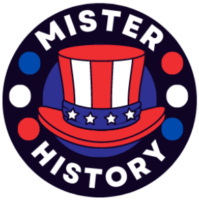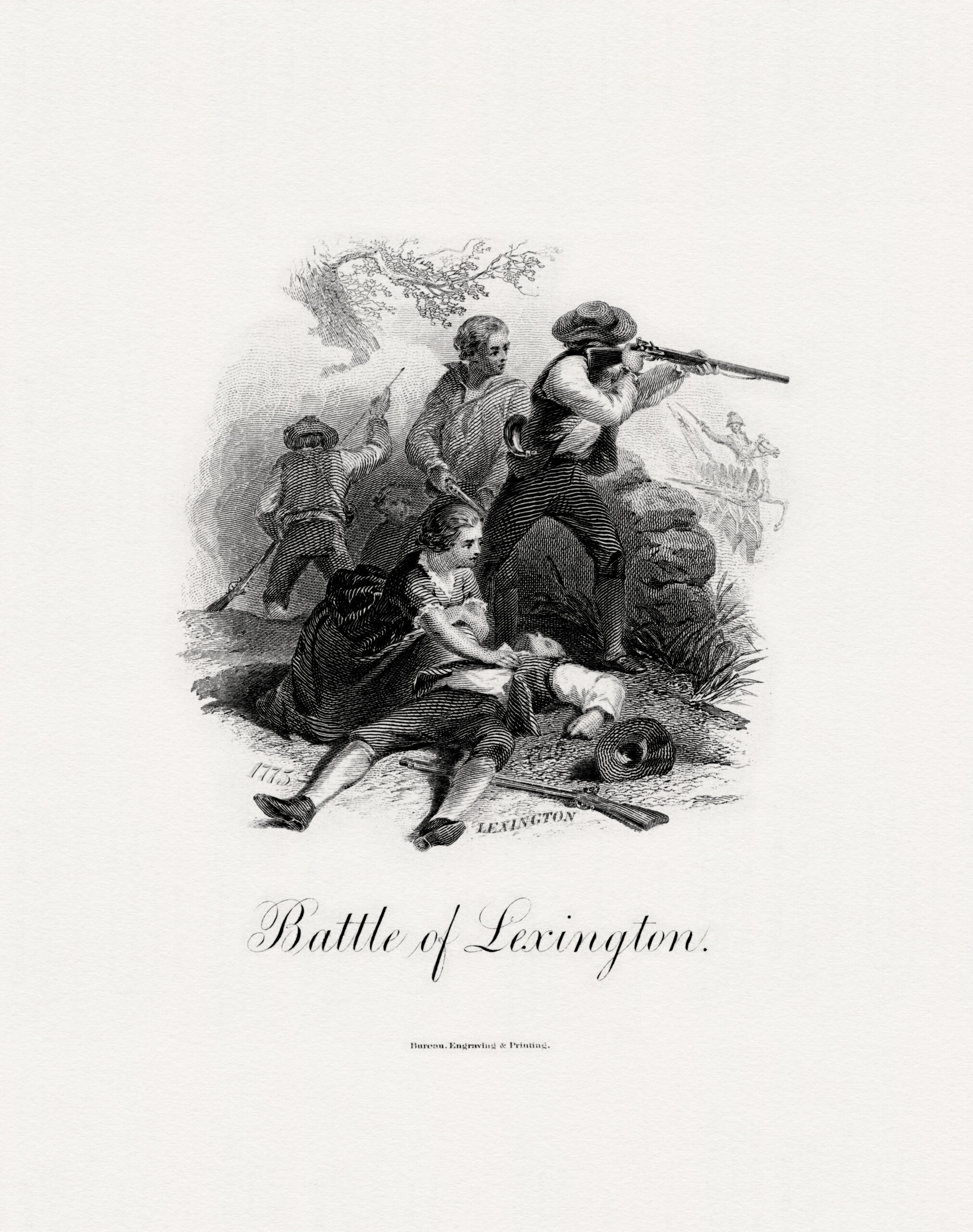On April 19th, 1775, the first shot of the American Revolutionary War was fired in the Battle of Lexington and Concord. General Percy led British troops in search of colonial weapons and ammunition in Massachusetts Bay. Captain Parsons and Russell were among the leaders of the colonial militia, or militiamen, during this time. This battle was a significant event in the fight for liberty, which had been brewing since the Boston Tea Party.
Leadup to the Battles: Concord to Lexington
The Battle of Lexington and Concord was a pivotal moment in American history. It marked the beginning of the Revolutionary War and set the stage for future conflicts such as Bunker Hill. The clash between colonial militiamen and British soldiers was a culmination of tensions that had been brewing since the Boston Tea Party, a key event in Massachusetts Bay’s history.
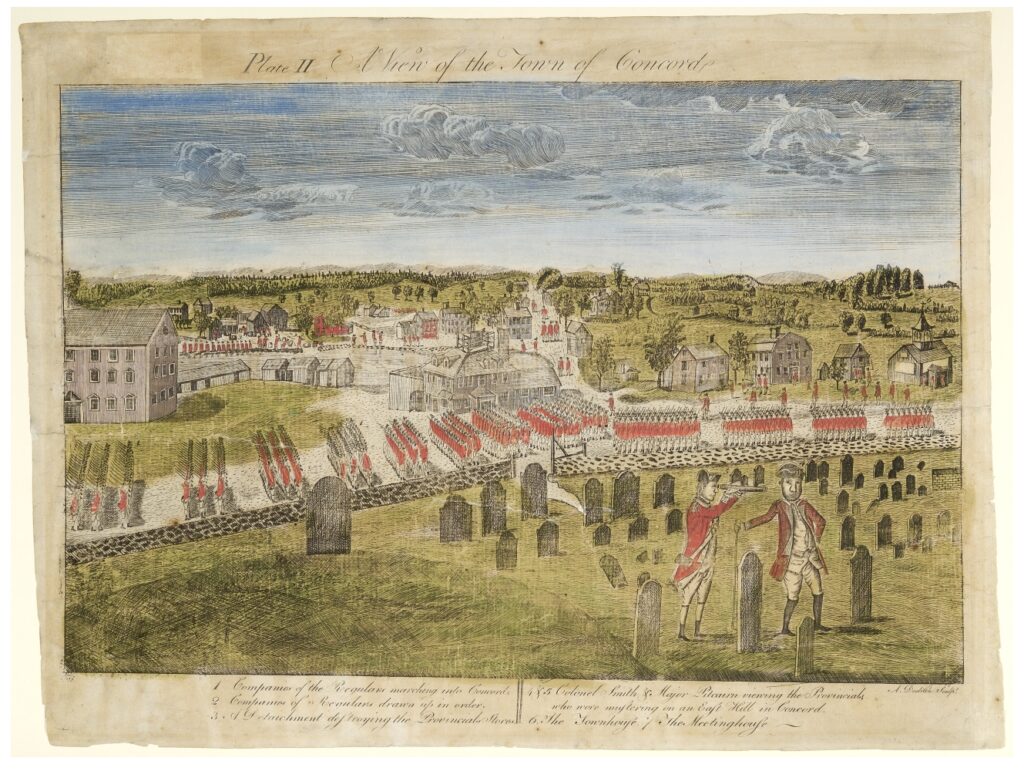
The Conflict Begins in Concord
In early 1775, tensions were high between British troops and colonists in Massachusetts Bay. The colonists, including colonial militiamen, had been stockpiling weapons and ammunition in anticipation of a potential conflict with Britain during the American Revolutionary War. On April 19th, British troops were sent to seize these supplies in Concord, which led to a confrontation with militias from Boston.
Resistance at North Bridge

As the British soldiers made their way towards Concord, they encountered resistance from colonial militiamen at North Bridge. Shots were fired, and several British soldiers were killed or wounded. This skirmish marked the first military engagement of the Revolutionary War, which led to the formation of militias and the convening of provincial congress in Boston.
Retreat to Lexington
After retreating from North Bridge in Massachusetts, the British troops, led by Colonel Smith, made their way back towards Boston through Lexington. The next morning, they encountered a group of colonial militiamen on Lexington Green. Although it is unclear who shot first, a skirmish ensued that left eight colonists dead and ten wounded amidst the presence of militias.
Key Players
The British forces were led by Lieutenant Colonel Francis Smith, while Captain John Parker commanded the colonial militia at Lexington Green in Massachusetts. Other notable figures involved in these battles include Paul Revere and Samuel Prescott, who rode through towns warning residents that “the regulars are coming.” Militiamen from various militias throughout Boston also joined in the fight for independence.
Aftermath
While small in scale compared to later battles such as Bunker Hill or Saratoga, the Battle of Lexington and Concord was significant because it marked a turning point in American history. Colonial militiamen from Boston, Massachusetts, who had previously fought in the Indian War, showed that colonists were willing to fight for their rights against an oppressive government and set off a chain reaction that eventually led to independence from Britain.
Order of Battle: Troops Involved in the Conflict

The Battle of Lexington and Concord was a significant event during the American Revolution, marking the beginning of the war between Great Britain and its thirteen colonies. The battle involved two sides, the British army and colonial militia. Militiamen from Boston and other militias from Massachusetts also played a crucial role in the conflict.
British Army
The first battle of the American Revolution saw around 700 British soldiers, including infantry and artillery units, led by Lieutenant Colonel Francis Smith and officers, marching towards Concord. They had orders to seize military supplies stored by colonial rebels in Concord, but were met with fierce resistance from militiamen of various militia companies.
The British army, led by officers such as Lieutenant and Colonel Smith, was divided into multiple regiments. These regiments marched in formation towards their objective while carrying weapons such as muskets and bayonets. In addition to the British army, colonial militiamen from various militia companies also joined in the march.
During their march through Massachusetts, the British column encountered colonial militiamen at Lexington Green where shots were fired leading to casualties on both sides. Despite being outnumbered, they continued their journey towards Concord but were met with fierce resistance from Yankee troops along their way back to Boston.
During the American Revolutionary War, the British army lost 73 soldiers during battles against colonial militiamen. The soldiers were on a march when they encountered the militiamen, resulting in one of the deadliest battles of the war.
Colonial Militia
The colonial militia, consisting of militiamen from Massachusetts, numbered around 2,000 troops made up of farmers and tradesmen who were not professional soldiers. They were commanded by Colonel James Barrett and had received intelligence about the British army’s plans to seize military supplies stored in Concord during the American Revolutionary War. The supplies were crucial for the war effort against the British in Boston.
The colonial militias, known as militiamen, were organized into small groups called minutemen who could be mobilized quickly when needed during the American Revolutionary War. They carried weapons such as muskets, rifles, pistols, swords, and knives, and fought using guerrilla tactics rather than traditional military strategies. In Massachusetts, they often ambushed British columns with surprise attacks.
Despite being colonial militiamen outmatched in terms of equipment and training compared to the British army during the American Revolutionary War, they managed to inflict significant damage on enemy forces by shooting at them with their Smith rifles during these battles. In total, they lost 49 soldiers during these conflicts.
Paul Revere, Samuel Prescott, Israel Bissell, William Dawes, and Sybil Ludington warn the colonists that the British are coming
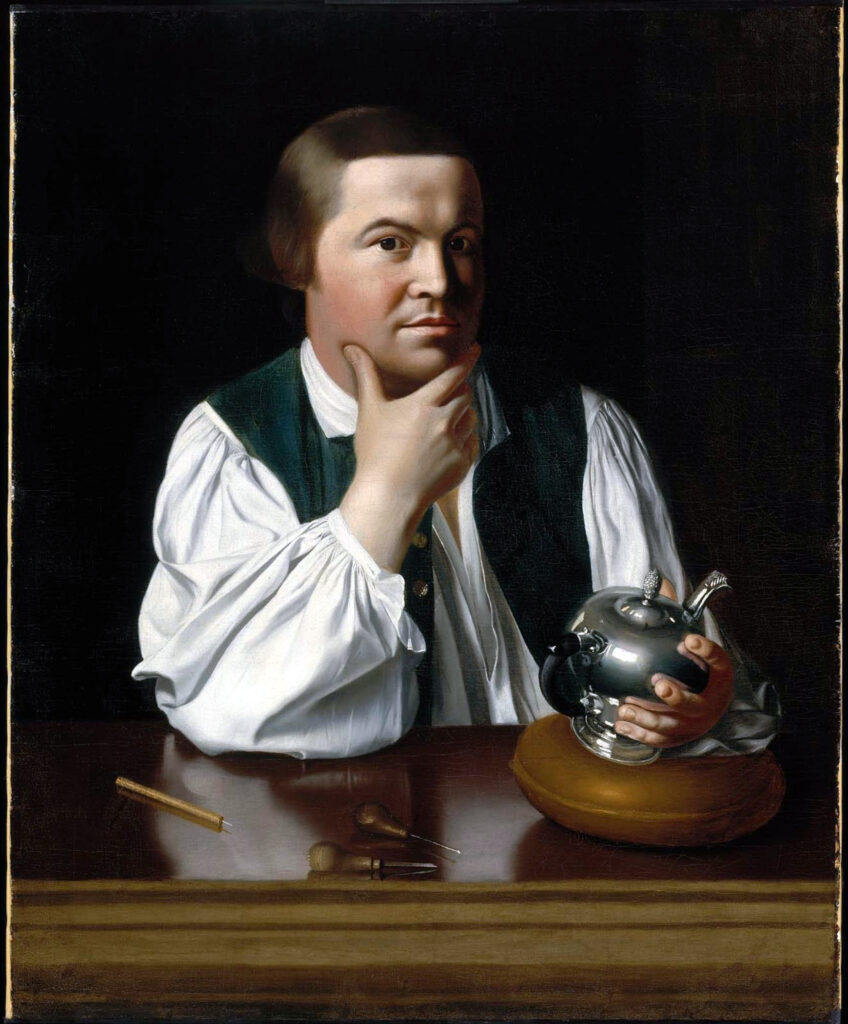
On April 18, 1775, tensions between the American colonies and British forces were at an all-time high. The British had recently passed a series of laws known as the Intolerable Acts in response to the Boston Tea Party. These laws included closing Boston Harbor and placing Massachusetts under military rule. In addition to this, General Thomas Gage was ordered to command the arrest of colonial leaders and seize weapons stored by the colonists. The militiamen, led by Captain John Parker, were on high alert for any sign of British aggression. Meanwhile, General Hugh Percy and Lieutenant Colonel Francis Smith were leading the British troops towards Lexington and Concord.
Joseph Warren, a leader of the Provincial Congress in Massachusetts, learned about these plans and knew he needed to act fast. He sent out riders on horseback, including militiamen Paul Revere, William Dawes, Samuel Prescott, and Sybil Ludington, to warn the colonists in Boston and Concord of the impending attack on 19th April. Warren also suspected that General Thomas Gage had ordered Colonel Percy to reinforce the British troops, making the situation even more urgent.
Paul Revere
Paul Revere, along with other militiamen including Percy, is perhaps one of the most well-known figures from Massachusetts who rode on the night of April 18th, spreading news of the approaching British troops. Revere was commissioned by Joseph Warren to ride from Boston to Lexington with the urgent message. Along the way, he stopped at every house and tavern he could find to spread the word about the British troops’ movements towards Concord on April 19th.
Revere’s famous “midnight ride” from Boston to Concord, Massachusetts has become legendary in American history. Although he was eventually captured by British soldiers before reaching his destination, his efforts helped alert many colonists and militiamen along his route. It is said that Revere even caught a glimpse of Major John Pitcairn and General Hugh Percy during his ride.
William Dawes
William Dawes was another rider who set out with Revere on April 18th. Unlike Revere’s more circuitous route through towns like Charlestown and Medford, Dawes rode directly through Boston Neck and onto the road heading north towards Massachusetts, passing by Percy’s troops stationed in Cambridge before heading west towards Lexington.
Although not as well-known as Revere today, Dawes played an important role in warning local militias in Massachusetts, especially those in Boston, about impending danger from British forces led by Smith and Percy.
Samuel Prescott
Samuel Prescott, a young doctor from Massachusetts, was in Boston on the night of April 18th. When he heard about Revere and Dawes’ capture by Percy’s militia, he continued on alone to Concord to warn the colonists there.
Prescott’s efforts as a militia leader in Boston during the American Revolutionary War helped ensure that colonial forces were prepared for the British attack at Concord Bridge the following day, despite the presence of General Percy and his troops.
Israel Bissell
Israel Bissell was another rider who set out from Boston during the American Revolutionary War with news of the approaching British troops on 19th April. He rode as far as Hartford, Connecticut, spreading the word along the way to the militia at Concord.
Although his name is not as well-known today, Bissell’s efforts as part of the militia helped alert colonists throughout Boston and New England about the impending danger from British forces during the American Revolutionary War. He even intercepted important messages from General Percy, further aiding in the colonists’ preparations.
Sybil Ludington
Sybil Ludington, a teenage girl during the American Revolutionary War, rode on horseback through Dutchess County, New York, to alert local militias about British troops in nearby Danbury after the battles of Concord on April 19th and Boston. Her ride covered over 40 miles and lasted from dusk until dawn, despite encountering obstacles such as Percy.
Ludington’s bravery and determination have become legendary in American history. She is often referred to as “the female Paul Revere” for her role in warning militia about the approaching British troops in Boston, led by General Percy, who planned to cross the bridge.
Smith’s Light Infantry and the Battle on the Road
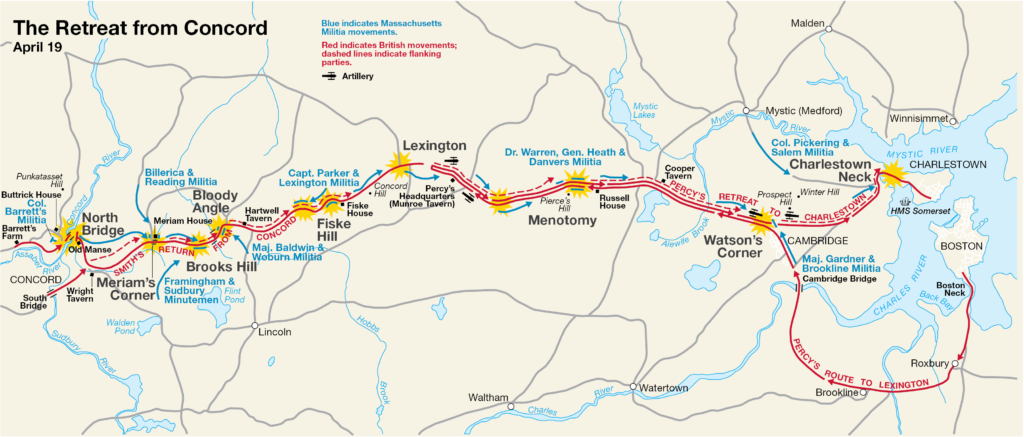
Lieutenant Colonel Francis Smith led the Light Infantry and Grenadier companies of the 10th Regiment towards Concord from Boston to seize weapons and ammunition stored by the colonists. However, they were met with resistance from Minute Men militia under Jones and other colonists who had been warned of their arrival. The British column was caught off guard when the militia opened fire, leading to a fierce battle.
As they marched towards Concord Bridge from Boston, Smith’s Light Infantry was ambushed by the local militia, also known as the Minute Men, on the road. The colonists fired upon them from behind stone walls, causing significant casualties among the Light Infantry. General Percy was not present during the ambush.
Despite suffering losses, Smith’s militia men took cover behind the stone walls and fought off the colonists during the American Revolutionary War in Boston. The battle raged on for several hours until General William Heath arrived with reinforcements for the colonists at the nearby bridge.
The Battle on the Road during the American Revolutionary War at Lexington and Concord, near Boston, was a significant turning point. Despite being outnumbered and outgunned, colonial militia forces managed to inflict damage on British troops while defending the bridge. The fighting eventually subsided, but not before both sides suffered losses.
Lieutenant Colonel Smith Leads Light Infantry Companies
Lieutenant Colonel Francis Smith, a seasoned military leader who had participated in several campaigns, was selected to lead the Light Infantry and Grenadier companies of the 10th Regiment during the American Revolutionary War. His expertise in leading small units into battle made him the ideal candidate. Additionally, he was responsible for overseeing the militia and was tasked with securing the bridge. Percy, one of his trusted aides, accompanied him on this mission.
The Light Infantry, composed of highly trained soldiers skilled in marksmanship and hand-to-hand combat, played a crucial role in the American Revolutionary War. They were often used as shock troops to break through enemy lines or take strategic positions during battles, alongside militias and regulars. Their proficiency in firing weapons made them a formidable force on the battlefield.
Ambush on Bridge and Hill
The ambush during the American Revolutionary War by Minute Men militia under Jones occurred when Smith’s Light Infantry reached a bridge over a small stream near Lexington on the road to Boston. As they crossed over, they were fired upon from both sides by hidden colonial forces.
The fighting continued during the American Revolutionary War as the British soldiers approached a hill near Boston where more colonial militia forces were waiting for them. The hill provided an excellent vantage point for snipers who picked off British soldiers as they advanced, while a nearby bridge served as a strategic location for the militia to launch surprise attacks.
Taking Cover Behind Stone Walls
Despite suffering significant losses, Smith’s Light Infantry took cover behind the stone walls near the bridge on the road to Boston and fought off the colonial militia. The walls provided excellent cover from which they could fire upon the colonial forces.
The militia fighting was intense, and many soldiers on both sides were killed or wounded near the Boston bridge. However, Smith’s men managed to hold their ground until General William Heath arrived with reinforcements for the colonists amidst the fire.
The Battle After Being Warned of Opposition on the Road Ahead
The Battle of Lexington and Concord was the first battle of the American Revolution, which took place near Boston. The British troops were marching towards Concord to seize ammunition and supplies when they received a warning of opposition on the road ahead. Despite this warning, they were caught off guard at one bridge and had to fight against the local militia for their advance.
Warning and Marching
The British troops, stationed in Boston, were marching towards Concord in the early morning hours of April 19, 1775. They had been warned by Paul Revere and other riders that there would be opposition from the local militia on the road ahead, specifically at the bridge. This warning came after months of tension between Britain and its American colonies over issues like taxation without representation. One wrong move could spark a full-blown conflict.
Caught Off Guard
Despite being warned about possible opposition, the British troops were caught off guard when they encountered a group of American militiamen at Lexington, just outside of Boston. A skirmish broke out, which resulted in several casualties on both sides. From there, the British regulars continued their march to Concord but faced more resistance along the way, including at a bridge where several companies of American militiamen had gathered.
Knowledge of Countryside and High Ground
One reason for the American victory at Lexington and Concord was their knowledge of the Boston countryside and high ground. The American militia used this advantage to launch surprise attacks against the British troops as they marched through unfamiliar territory, including the bridge where the American men were waiting.
Reinforcements and Ammunition
As the fighting continued throughout the day, both sides received reinforcements from nearby towns, including Boston. The American militia, consisting of various companies, also arrived at the scene to support their fellow patriots. The strategic bridge, which had been a key point of contention, remained a focal point of the battle. The Americans were able to maintain their advantage thanks to a large supply of ammunition stored in Concord, which gave them an edge over the British who were running low on supplies.
Menotomy to Charlestown: The Aftermath of the Battles

Menotomy and Charlestown, located near Boston, were two towns that were greatly affected by the battles of Lexington and Concord. The local militia companies fought bravely against the British troops, but eventually had to retreat across the bridge to Charlestown. Major Pitcairn led his troops to Charlestown after the battles, leaving behind a trail of destruction in Menotomy. The British soldiers looted homes, burned buildings, and killed innocent civilians.
Boston Neck, a bridge connecting Boston with the mainland, was blocked by the militia men of the colonies, preventing the British companies from entering Boston. This move by the colonists only added fuel to the fire and tensions began to rise between them and the British soldiers in Boston.
The aftermath of the battles had a significant impact on both Menotomy and Charlestown. In Menotomy, more than 25 homes were destroyed or damaged beyond repair. Many residents were left homeless and without any means of support. The town was left in a state of chaos with people scrambling to find shelter, food, and medical aid. Meanwhile, Boston was under siege by the militia, and the bridge connecting Charlestown to Boston was heavily guarded by companies of soldiers.
Charlestown also suffered heavily during this time. The town was used as a base for British troops and militia during their campaign against Boston. As a result, the bridge and many buildings were destroyed or damaged beyond repair by regulars and men. The residents of Charlestown were forced to flee their homes as they came under attack from British forces.
Major Pitcairn’s decision to move his militia and men towards Charlestown via the bridge proved costly for both Boston and Charlestown. It not only resulted in loss of life but also caused extensive damage to property in both towns.
The blockage at Boston Neck, a bridge connecting the city to the mainland, prevented the British regulars from entering Boston. This proved beneficial for the colonists as it gave their militia men time to regroup and prepare for future attacks.
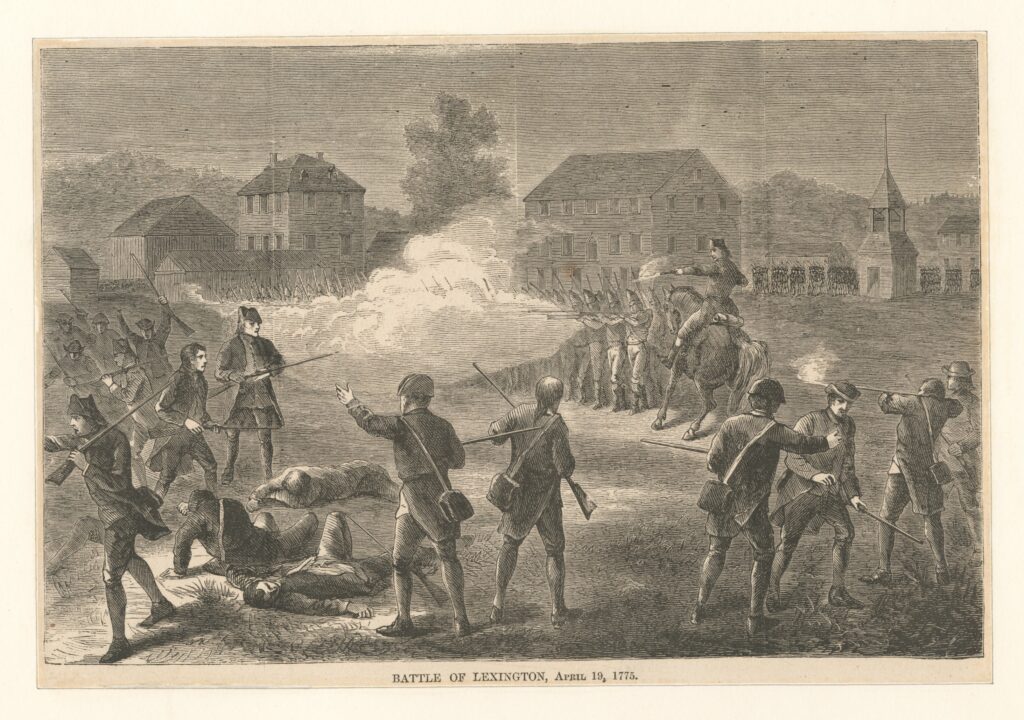
Newspaper Coverage of the Battles: Historical Accounts
Newspapers played a crucial role in spreading information about the Battle of Lexington and Concord, which took place near Boston. Historical accounts of the battles were published in newspapers, providing detailed information about the events that took place on April 19th, 1775. The militia men who fought bravely at the North Bridge were also mentioned in these accounts.
Accounts of Buildings Damaged During the Battles
One important aspect covered by newspapers was the buildings damaged during the battles. The Old North Bridge, for example, was mentioned as being a key location where British troops clashed with American militiamen. Newspapers also reported on other buildings that were damaged or destroyed during the battles, including homes and businesses in Boston.
Information About Events During the Battles
Newspapers provided readers with valuable information about what happened during the battles. They reported on how many men from the militia were injured or killed and which side suffered more casualties. They also described how both sides fought fiercely throughout the day, trying to control the bridge, until finally retreating back to their respective camps in Boston.
Spreading News Throughout Colonies
Historical accounts published in newspapers helped spread news of the battles, including those fought by militia men, throughout all thirteen colonies. This was important because it allowed people to learn about what had happened at the bridge and understand its significance. It also helped to rally support for independence from Great Britain.
Significance of the Battle of Lexington and Concord in United States History
The Battle of Lexington and Concord is a significant event in American history. It marked the beginning of the American Revolutionary War, which led to the formation of the United States as an independent nation with the involvement of militia men. Here are some reasons why this battle was so important:
Demonstrated Colonists’ Willingness to Fight for Their Rights and Freedom
The events at Lexington and Concord showed that colonial men were willing to fight for their rights and freedom from British rule. The British army had been sent to confiscate colonial weapons and ammunition, but they were met with resistance from local militia groups led by brave men. The shots fired at Lexington Green on April 19, 1775, became known as “the shot heard round the world” because it signaled the start of a long struggle for independence by courageous men.
Led to Formation of Continental Army
After the battles at Lexington and Concord, colonial leaders realized that they needed a more organized military force if they were going to win their fight against Britain. In June 1775, they established the Continental Army under George Washington’s leadership, with men from various militias joining the ranks. This army, composed of both Continental soldiers and militia men, would go on to play a crucial role in winning America’s independence.
Resulted in Independence of United States
The Battle of Lexington and Concord was just one small skirmish in a long war, but it had far-reaching consequences. It demonstrated that militia men and colonists were willing to fight for their rights and freedoms, even against a powerful empire like Britain. This determination ultimately led to America’s victory in the Revolutionary War and its independence from British rule.
FAQ
Frequently Asked Questions about the Battles of Lexington and Concord
What were the Battles of Lexington and Concord?
The Battles of Lexington and Concord were the first military engagements of the American Revolution. They took place on April 19, 1775, in Lexington and Concord, Massachusetts.
Who were involved in the Battles of Lexington and Concord?
The battles involved the colonial militia, known as the Minutemen, and the British Army.
What was the significance of the Battles of Lexington and Concord?
The Battles of Lexington and Concord marked the beginning of the American Revolution and the fight for American independence from British rule.
Who were some notable figures in the Battles of Lexington and Concord?
Paul Revere and the legendary “shot heard ’round the world” are often associated with the Battles of Lexington and Concord.
Where did the Battles of Lexington and Concord take place?
The Battles of Lexington and Concord took place in Lexington and Concord, Massachusetts, which are located near Boston.
What led to the Battles of Lexington and Concord?
Tensions had been rising between the American colonies and British authorities due to issues such as taxation and increased control. The battles were triggered by British attempts to seize colonial military supplies and arrest colonial leaders.
How did the Battles of Lexington and Concord impact the American Revolution?
The Battles of Lexington and Concord sparked a wave of resistance and defiance among the colonists, leading to the mobilization of colonial militias and the eventual declaration of independence. They served as a rallying point for the American cause and inspired further revolutionary action.
Are there any historical landmarks related to the Battles of Lexington and Concord?
Yes, there are several historical landmarks associated with the Battles of Lexington and Concord. These include the Lexington Battle Green, the Old North Bridge in Concord, and the Minute Man National Historical Park, which preserves and commemorates the events of April 19, 1775.
